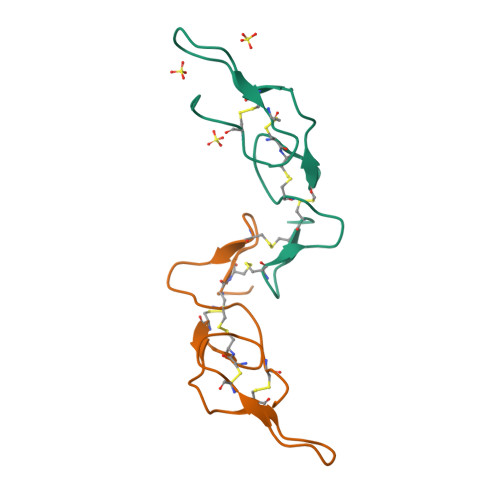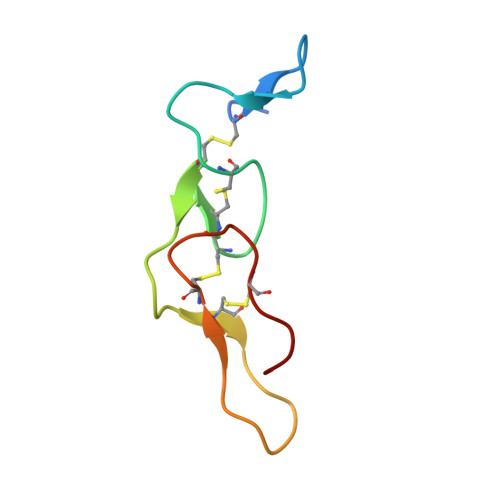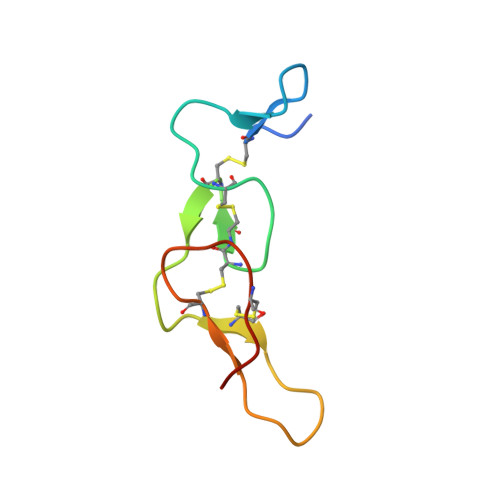Crystal structure of acostatin, a dimeric disintegrin from southern copperhead (Agkistrodon contortrix contortrix) at 1.7 A resolution
Moiseeva, N., Bau, R., Swenson, S.D., Markland, F.S., Choe, J.-Y., Liu, Z.-J., Allaire, M.(2008) Acta Crystallogr D Biol Crystallogr 64: 466-470
- PubMed: 18391413
- DOI: https://doi.org/10.1107/S0907444908002370
- Primary Citation of Related Structures:
3C05 - PubMed Abstract:
Disintegrins are a family of small (4-14 kDa) proteins that bind to another class of proteins, integrins. Therefore, as integrin inhibitors, they can be exploited as anticancer and antiplatelet agents. Acostatin, an alphabeta heterodimeric disintegrin, has been isolated from the venom of Southern copperhead (Agkistrodon contortrix contortrix). The three-dimensional structure of acostatin has been determined by macromolecular crystallography using the molecular-replacement method. The asymmetric unit of the acostatin crystals consists of two heterodimers. The structure has been refined to an R(work) and R(free) of 18.6% and 21.5%, respectively, using all data in the 20-1.7 A resolution range. The structure of all subunits is similar and is well ordered into N-terminal and C-terminal clusters with four intramolecular disulfide bonds. The overall fold consists of short beta-sheets, each of which is formed by a pair of antiparallel beta-strands connected by beta-turns and flexible loops of different lengths. Conformational flexibility is found in the RGD loops and in the C-terminal segment. The interaction of two N-terminal clusters via two intermolecular disulfide bridges anchors the alphabeta chains of the acostatin dimers. The C-terminal clusters of the heterodimer project in opposite directions and form a larger angle between them in comparison with other dimeric disintegrins. Extensive interactions are observed between two heterodimers, revealing an alphabetabetaalpha acostatin tetramer. Further experiments are required to identify whether the alphabetabetaalpha acostatin complex plays a functional role in vivo.
Organizational Affiliation:
National Synchrotron Light Source, Brookhaven National Laboratory, Building 725D, Upton, NY 11973, USA.






















